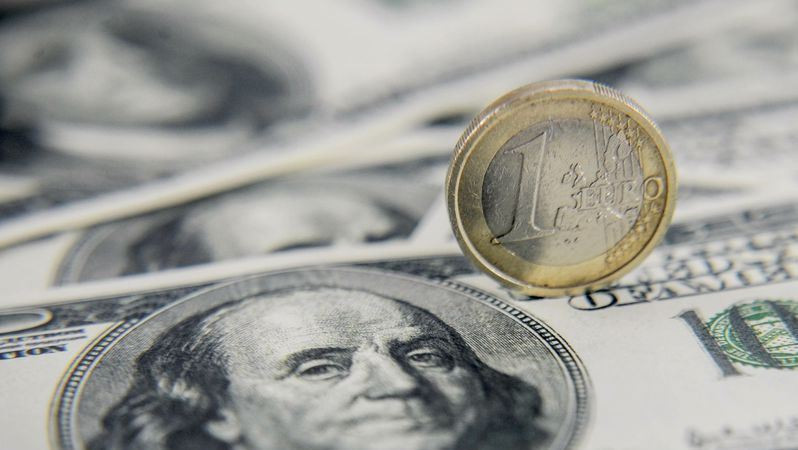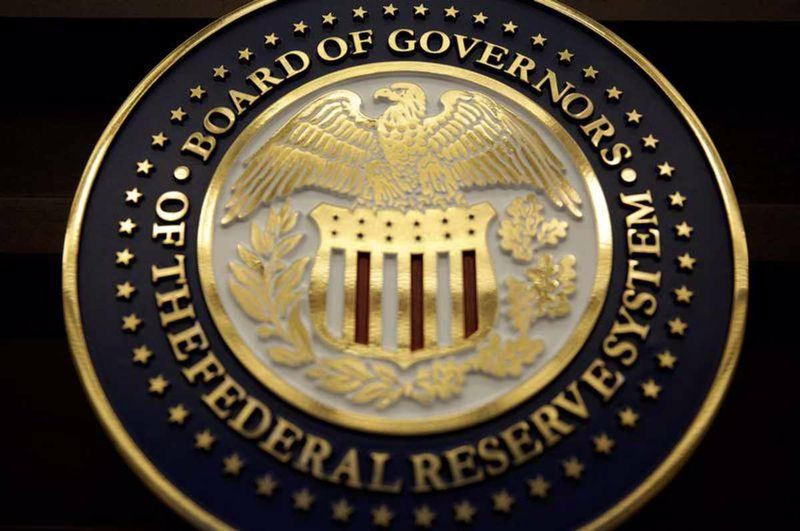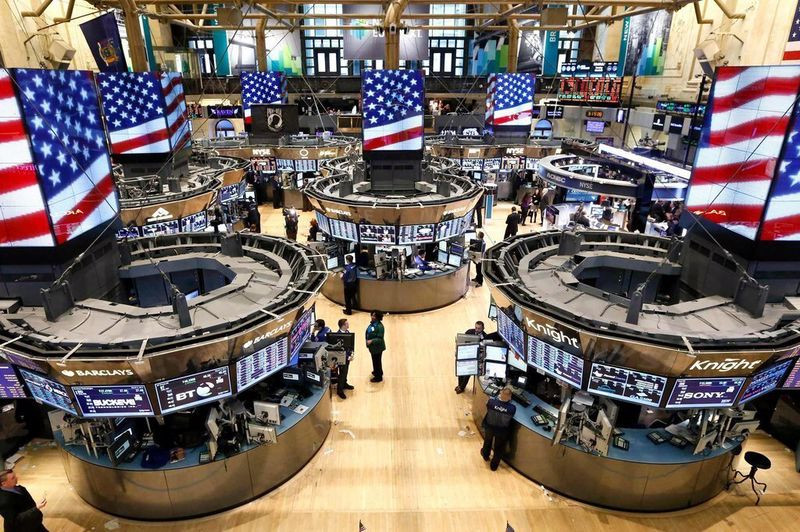
Following the results of the last five days, the greenback lost about 1.2%, and the EUR/USD pair added more than 150 points. Starting Monday at 1.0580, it finished Friday at 1.0735.
The euro repeated the previous week's success, strengthening against its American counterpart by about 1.5%.
The growth of the single currency was facilitated by the comments of European Central Bank President Christine Lagarde, who said that the APP program would end at the very beginning of the third quarter, which in turn would allow interest rates to rise in July and then in September.
At the same time, she did not rule out the possibility of further rate hikes in the fourth quarter.
Lagarde dealt a blow to the dollar, pointing out that the end of negative interest rates in the eurozone is not far off.
This changed the view held by many that a military conflict in eastern Europe would limit the ECB's ability to raise rates significantly."What has been happening throughout this and the market has been ignoring is the story of interest rates in Europe," said Richard Benson of Millennium Global, who earlier this month switched from a strategically long position on the US currency to a tactically short deal.
The dollar reached a peak above 105 in the middle of this month, after which it moved to a decline, allowing the pair to rebound from the five-year low around 1.0350.
The EUR/USD rebound is very noticeable, and it is becoming increasingly difficult to consider it a temporary reversal, UBS Bank strategists say.
"The percentage increase over a two-week period is close to 3%, which, if we exclude a very volatile period at the height of the COVID-19 pandemic, will be the largest two-week increase since February 2016, when the US dollar changed course amid the Federal Reserve's rhetoric suggesting a slower pace of monetary policy tightening," they noted.
"We expected the EUR/USD pair to reach a low of 1.0400 in the second quarter before gradually increasing in the second half of the year. The recent price dynamics confirms our opinion that there are fewer opportunities for further strengthening of the USD from now on," MUFG Bank added.

Last week, traders continued to reduce their long positions on the dollar amid speculation that the Fed may suspend the rate hike cycle after two increases of 50 bps in June and July.
"The greenback is losing ground as the view that the Fed will suspend rate hikes in the fall is gaining momentum," Western Union analysts said.
Many Fed officials expect that an early rate hike will allow the US central bank to pause later this year to assess the consequences of policy tightening for the country's economy, the minutes from the May FOMC meeting released last Wednesday showed.
Some market observers believe that concerns about the economic impact of a higher rate at a time when inflation may have peaked mean that the US central bank may suspend the tightening cycle in September.
On Thursday, the US Department of Commerce reported that the slowdown in the national economy in the first quarter turned out to be more significant than initially expected. In annual terms, US GDP fell by 1.5%, making the first quarter the worst since COVID-19 hit the United States in the second quarter of 2020.
The Fed's preferred inflation indicator was released on Friday – the basic price index of consumption, which in April slowed growth from 5.2% to 4.9%.
In such an environment, the Fed may not tighten monetary policy too aggressively, which plays into the hands of risky assets to the detriment of the protective dollar.
Seeing the light at the end of the inflation tunnel, the US stock market breathed a sigh of relief.
Key Wall Street indexes ended Friday's trading with a sharp increase. In particular, the S&P 500 rose by 2.47% to 4,158.24 points. In general, over the past five days, the index added 6.6%, which was the most successful week since November 2020. Before that, the S&P had been declining for seven consecutive weeks.

Meanwhile, on Friday, the greenback reached its lowest level since April 25 in the area of 101.40, after which it was able to win back most of the day's losses and closed in a symbolic negative, about 101.66, having plunged by 0.05%. Nevertheless, the US currency approached its first monthly drop in five months. The dollar has already fallen by 2% in May.
At the beginning of the new week, pressure on the protective dollar remains in the face of prevailing demand for risk in market sentiment.
The USD index is trading at one-month lows, losing about 0.3% and testing the strength of support around 101.30.
If a negative momentum develops, dollar bears may head towards the 55-day moving average, which is currently at 101.10, and then to the three-month support line around 100.60.
The positive mood of investors is largely due to the news from China, where the authorities of Shanghai and Beijing intend to ease coronavirus restrictions from June 1, which is expected to give a boost to the global economy.
In addition, market participants are beginning to think about what the Fed's policy will be after two 0.5% rate hikes at the next two FOMC meetings. More and more investors are inclined to believe that the central bank will slow down the pace of monetary policy tightening due to the growing threat of recession.
"We still believe that the best of the broader US dollar rally is over, and although it may not have fallen much yet, further growth seems unlikely," Scotiabank strategists say.
"The Fed's policy has been fully evaluated, and expectations for a rate hike by the central bank later this year may be revised if the economy slows down faster than expected," they said.
Meanwhile, Brown Brothers Harriman analysts consider the current weakening of the USD as a correction within the framework of a long-term dollar rally.
"We are still surprised by how much the greenback has fallen since the peak of early May, and we still believe that pessimism towards the US is exaggerated, as markets overlook the problematic fundamental prospects for the eurozone, the UK and Japan," they said.
Rabobank economists are also positive about the US currency and expect that demand for safe assets will support USD in the coming months.
"Despite signs that the Fed's determination to regain confidence in the fight against inflation may lead to a recession in the US next year, we expect that a safe dollar will find demand against this background. It is likely that any sense of crisis will increase demand for USD, even if the trigger for the deterioration of market sentiment is the weakening of US fundamentals," they noted.
"Given the fragile nature of market sentiment, we expect a high level of volatility in the foreign exchange market in the coming months. We believe that the bursts of short positions on the US currency will be short-lived, and we still see the risk of another EUR/USD drawdown to 1.0300 in the future from one to three months," Rabobank added.
The main currency pair traded in the range of 1.0730-1.0780 on Monday.
On the one hand, the ongoing rally in global stock markets undermines the dollar's position and supports the euro.
On the other hand, the threat of an energy crisis in Europe limits the growth of EUR/USD.

A two-day EU summit starts on Monday, the participants of which are going to discuss the sixth package of sanctions against the Russian Federation, including a possible ban on the supply of Russian oil to the region. This raises concerns that the European economy will suffer the most from the ongoing Ukrainian crisis, which may make it difficult for the ECB to tighten monetary policy.
ECB chief economist Philip Lane said today that the central bank should raise interest rates by 25 basis points in July and September. However, his comments did not have a significant impact on the EUR/USD pair.
Apparently, most of the expected ECB rate hike has already been included in the quotes.
In addition, investors understand that much will depend on the inflation picture in the coming months and other incoming data.
"It is clear that the core of the ECB is now taking a more hawkish position, but there have also been calls for a smooth adjustment of policy from more dovish ECB members who may be concerned about lowering economic growth forecasts and widening bond spreads, which is called fragmentation," Westpac analysts said.
"The EUR/USD pair rebounded after drawdowns below 1.0500, and further consolidation is possible, while a sharper contraction seems unlikely before the ECB meeting on June 9," they added.
The eurozone will publish the latest inflation data on Tuesday. According to forecasts, the consumer price index will reach another record high of 7.7% in May, compared with 7.4% in April.
This may provoke talk of a bigger step than a 25bp rate hike in July, which some ECB officials are already insisting on. Meanwhile, the key report on the US this week will be non-agricultural employment data for May, which will be released on Friday and is expected to show that 320,000 jobs have been added to the economy compared to 428,000 in April.
"The employment data will shed some light on the possibility of the Fed tightening policy in the third quarter," Western Union strategists said.
As for the technical picture, the EUR/USD pair is trying to settle above the 50-day moving average at 1.0745. Subsequent purchases above the 1.0770-1.0775 area, where the 50% Fibonacci retracement level is located, will become a new trigger for the bulls and allow them to aim for 1.0800, and then 1.0850 and 1.0880.
On the other hand, the pair seems to attract bulls on the decline to 1.0700. The next support is located in the area of 1.0675-1.0670, near which the Fibonacci correction level is 38.2%. The inability of EUR/USD to stay at these levels will lead to a drawdown below the 1.0645-1.0640 area and make the pair vulnerable to further declines, during which the bears may try to test the Fibonacci retracement level by 23.6% near 1.0500 with intermediate support at 1.0600.





















